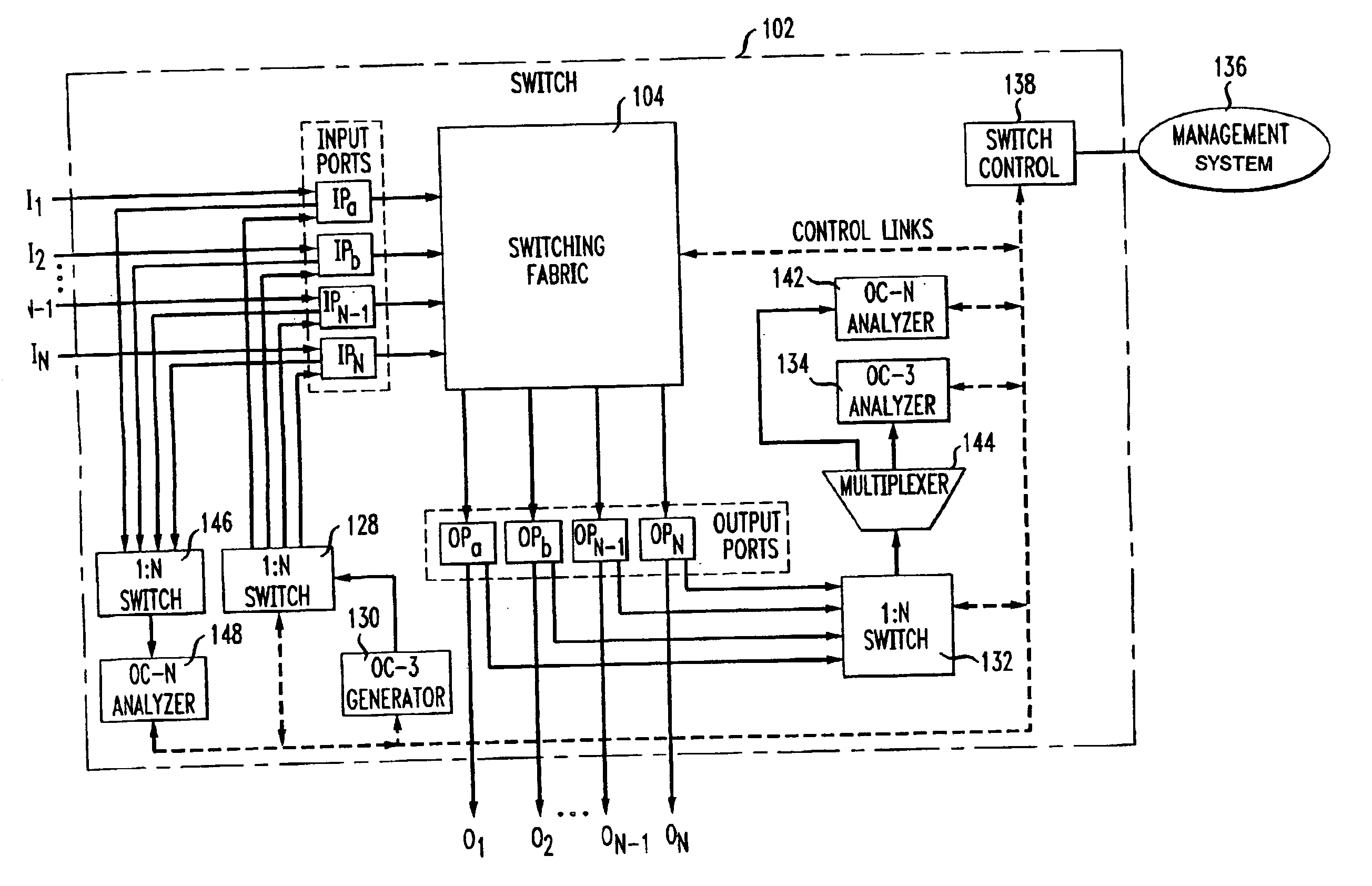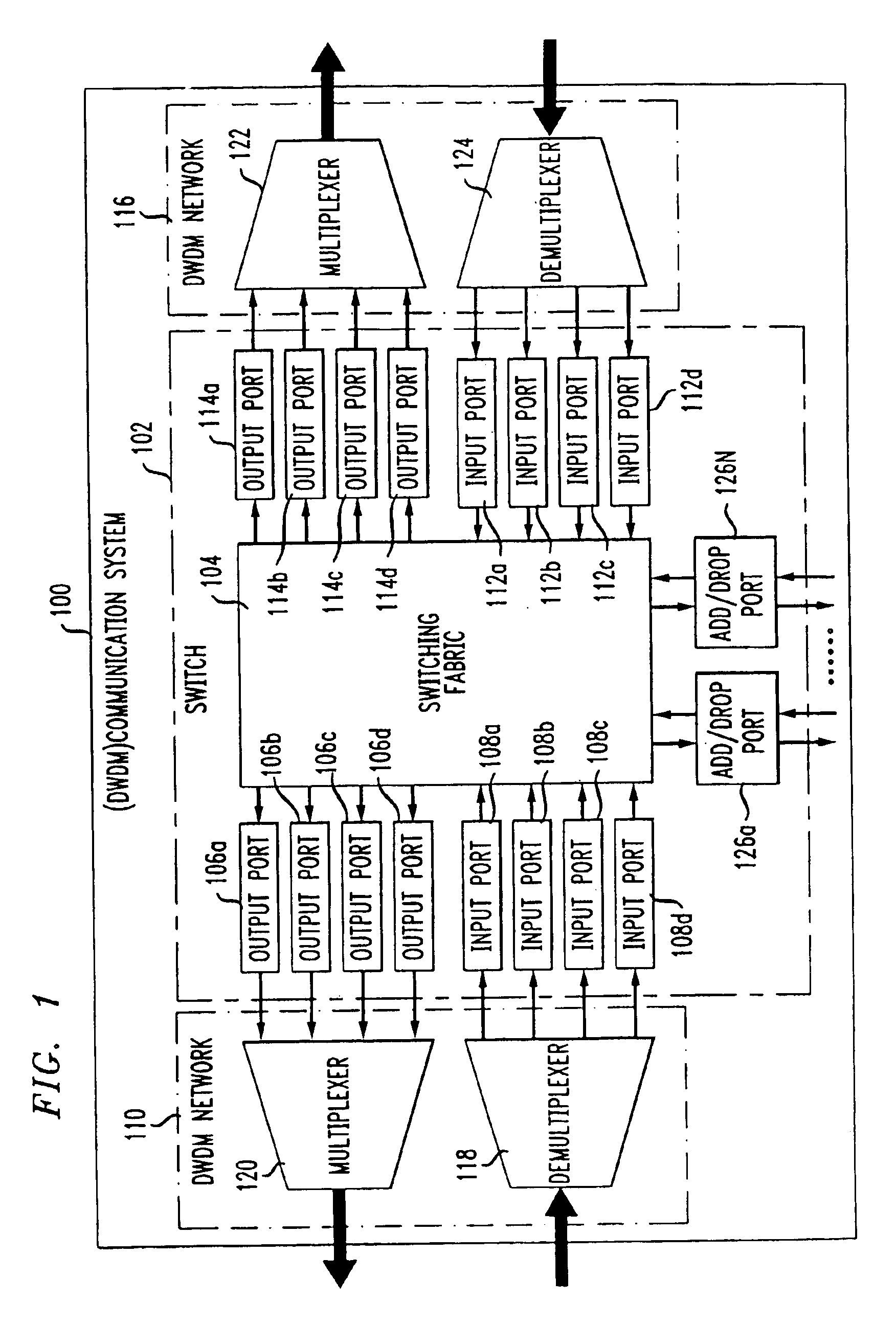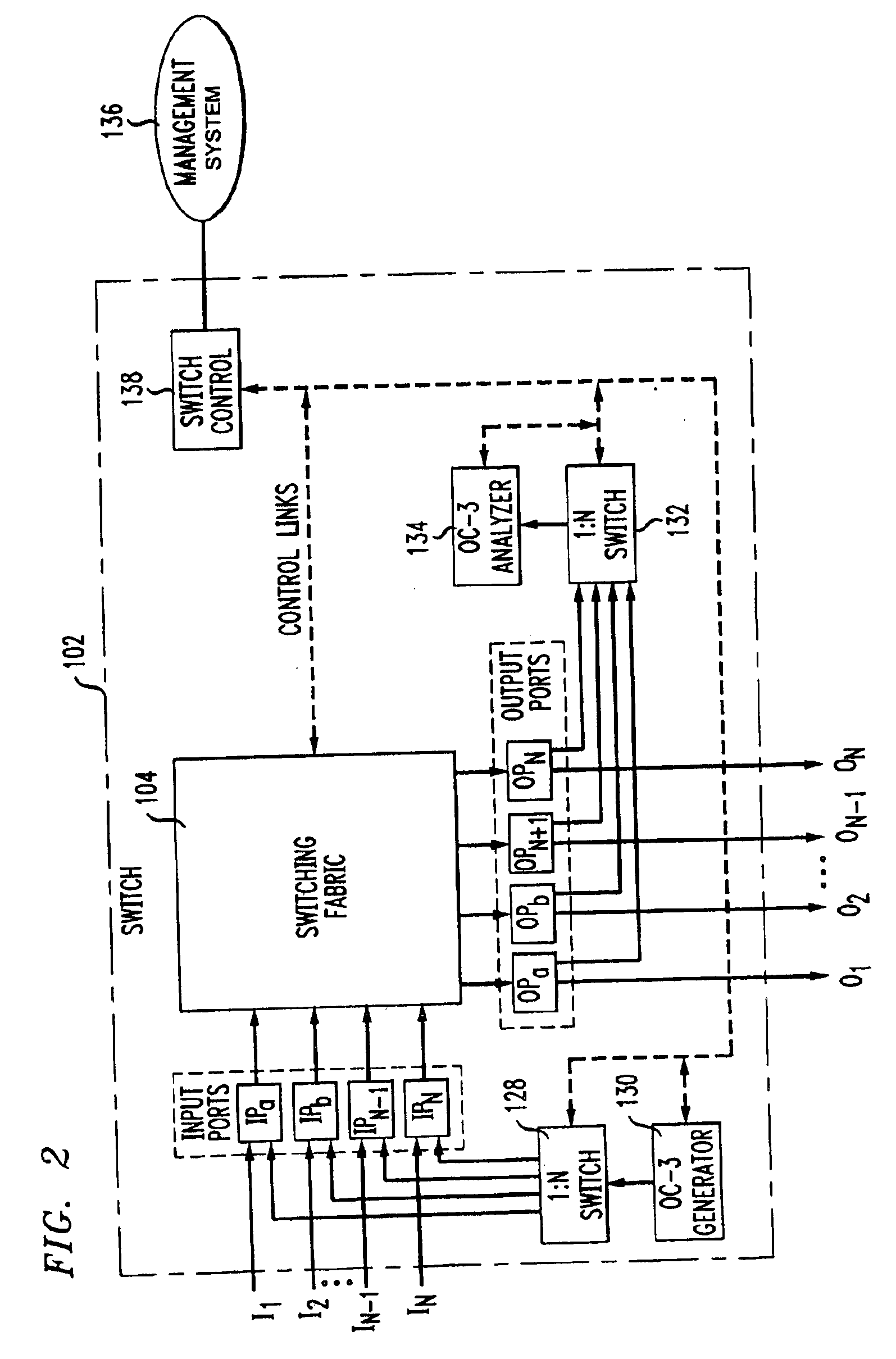Transparent optical switch
a transparent optical switch and optical network technology, applied in the field of communication systems, can solve the problems of limited ability to examine and extract necessary information carried within the optical signal, inability to achieve the bandwidth, and inability to meet the requirements of bandwidth, etc., to achieve the effect of achieving the bandwidth, the control of the optical network is relatively complex, and the network management is adequate. , the effect of reducing the cost of operation
- Summary
- Abstract
- Description
- Claims
- Application Information
AI Technical Summary
Benefits of technology
Problems solved by technology
Method used
Image
Examples
Embodiment Construction
FIG. 1 shows a portion of a dense wave division multiplexing (DWDM) communication system 100 having a transparent optical switch 102 in accordance with the present invention. As used herein, transparent and non-blocking optical switches refer to optical switches that do not convert optical signals to electrical signals for signals that pass through the switch, i.e., not add / drop signals. The switch 102 includes switching fabric 104 that interfaces with a first set of output ports 106a-d and a first set of input ports 108a-d coupled to a first DWDM network 110. A second set of input ports 112a-d and a second set of output ports 114a-d are coupled to a second DWDM network 116. The ports 106,108,112,114, in combination with the switching fabric 104 provide bi-directional communication between the first and second DWDM networks 110,116.
The first set of input ports 108 receive respective channel data from a first DWDM demultiplexer 118 and the first set of output ports provide channel da...
PUM
 Login to View More
Login to View More Abstract
Description
Claims
Application Information
 Login to View More
Login to View More - R&D
- Intellectual Property
- Life Sciences
- Materials
- Tech Scout
- Unparalleled Data Quality
- Higher Quality Content
- 60% Fewer Hallucinations
Browse by: Latest US Patents, China's latest patents, Technical Efficacy Thesaurus, Application Domain, Technology Topic, Popular Technical Reports.
© 2025 PatSnap. All rights reserved.Legal|Privacy policy|Modern Slavery Act Transparency Statement|Sitemap|About US| Contact US: help@patsnap.com



